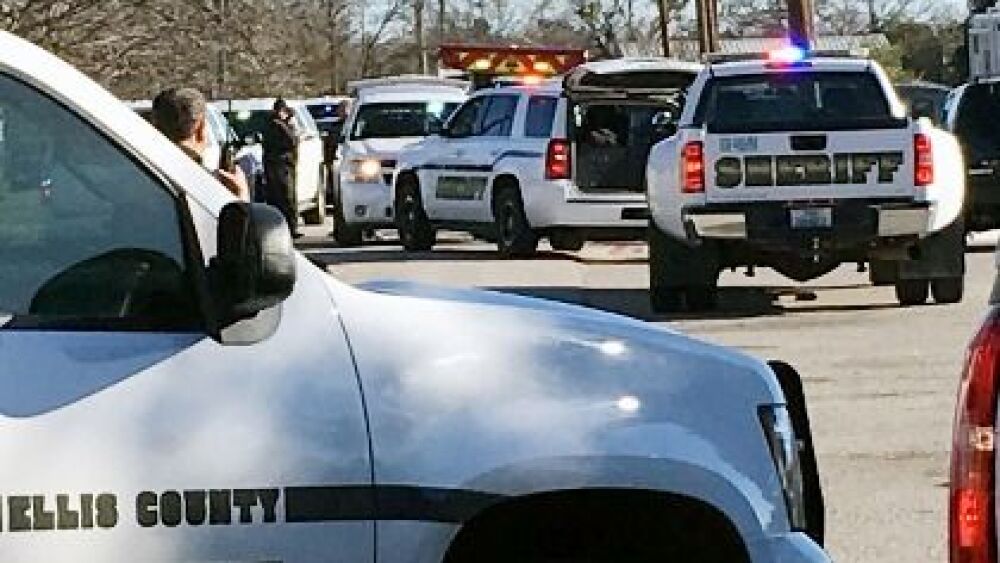The Parkland school shooting clearly revealed that not every officer in this nation is prepared to “ride to the sound of the guns” when arriving at an in-progress active shooter event. This performance will undoubtedly be repeated unless strides are taken to override the tendency for any lone officer arriving at a “shots fired” call to wait for back-up.
Train for a ‘wait for back-up override’
When an experienced officer arrives at an active shooter scene, they may have had one or two active shooter training experiences. In those trainings, they may or may not have had a trainer emphasize that to save lives you must “Engage the shooter ASAP!”
This contradicts being told their entire career by trainers, supervisors, field training officers and partners to “wait for back-up” in much less serious circumstances. Clearly an active shooter in the process of killing innocents is a special circumstance. Therefore, if we want to ensure immediate engagement by officers who arrive first and alone, we must train them extensively to override the “wait for back-up” conditioning.
Addressing ‘can’t do’ in training
Here are some suggestions to override the “wait for back-up” approach. In training exercises have your officers:
- Perform specifically designated “solo officer active shooter” drills for repetition.
- Practice moving rapidly to the sound of the guns while:
a. Utilizing the Groucho Walk;
b. Cutting the pie;
c. Bypassing the wounded;
d. Gathering intelligence from fleeing witnesses;
e. Communicating on the move. - Take focused shots with both hand guns and long guns on realistic immediate threat targets on the range without prior verbalization.
- Perform lone officer squad dismounts while practice acquiring the long gun and “go bag.”
- Practice reloading all weapons under stress using the extra magazines in an active shooter “go bag.”
- Perform force-on-force solo officer active shooter scenarios.
- Specifically address the possibility that officers might become involved in an active shooter situation off-duty and practice while on-duty with their off-duty gear.
- Add to your policy indicating that if an off-duty officer engages an active shooter off-duty, they will be considered immediately on-duty and fully covered.
Large group exercises for active shooter training are wonderful and should continue, but by specifically training for the lone officer response to the active shooter, you can override the “wait for back-up” pre-conditioning.
What about ‘won’t do?’
There are some among us who wear a uniform and badge and carry a gun that, if they are ever put into a must-shoot situation, won’t be able to do it even to save their own lives. This historical phenomenon has been well documented in Col. David Grossman’s book “On Killing.” It is very difficult to predict “won’t do,” because these officers may excel in firearms; however, if they are called upon to practically apply their skill on the street, they just “won’t do” it.
Some officers courageously leave law enforcement before letting someone down after admitting they could never shoot another human being under any circumstance.
However some “won’t do” officers transfer into a specialization where they believe they can avoid being placed in a shooting circumstance. Since it is difficult to predict a “won’t do officer,” train all of your people in making good force decisions under stress so often that you create an almost automatic, “My training kicked in…” response when the moment of truth arrives.
Equipping the solo responder
Ready access to the equipment an officer needs to respond to an active shooter event is essential, because as that first officer arrives, people are dying. The bare minimum off-duty equipment an officer should carry is a concealed firearm, a high-quality holster, spare magazine, police identification, tactical light and flex-cuffs.
Additional gear for on-duty officers is designed to either stop the threat, or stop the bleeding.
1. Stopping the threat
The faster the first honorable gunfighter effectively engages the threat, the fewer the casualties. An officer should have his long gun at the ready as he/she exits the squad and already be wearing a ballistic vest.
There are commercially available active shooter go-packs that are configured on vests, or easy carry packs, which often have ballistic capabilities built into them. To stop the threat these packs will include:
- Extra magazines
- Handcuffs and flex cuffs
- Tactical light, ChemLights
- Door wedges
Some agencies also furnish their officers with distractive devices, Kevlar helmets and shields.
2. Stopping the bleeding
In an active shooter situation, the first responding officer’s primary responsibility is to stop the threat. Once the threat has been addressed, the concern needs to transition to stopping the bleeding. One thing active shooters and arterial bleeding have in common is, if not stopped, they will both cause death.
An officer trained in the use of a few critical items can save lives of the wounded. A stop the bleeding go-pack should include:
- Dressings and cling bandages
- A hemostatic agent
- Tourniquets
- Rescue airway and pocket mask
- Rescue blanket
This section of the go bag can be used on many occasions, not only to help general public, but also friends, family, the suspect and, yes, even on you. If you choose to customize your own go bag, the act of doing so is a powerful pre-incident mental preparation taking place as you build the kit.
One last “stop the bleed” item every initial responding officer should have available to them is a rifle-rated vest – or at least inserts – that will not stop the bleeding, but prevent the bleeding: your own.
Closing
When a moment of calm is turned into sheer chaos by the sounds of gunfire and the panicked masses desperately scatter in an attempt to survive, you will be able to use the panic of the crowd as the perfect diversion, while you move calmly to stop the threat because you have prepared to prevail.



